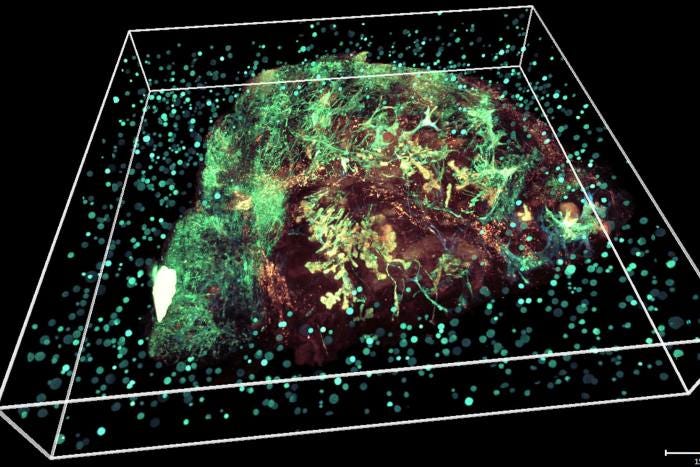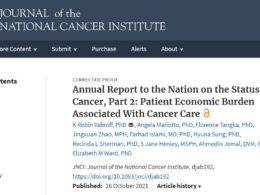Financial Times
June 16, 2022
The world’s largest cancer research charity and the largest government funder in the area have kicked off a new £295mn partnership they hope will revive medical research post-pandemic to address the biggest challenges posed by the disease.
Cancer Research UK and the US government’s National Cancer Institute have committed £80mn for four international projects as part of their Cancer Grand Challenges initiative, which will have at least two more funding rounds.
With £20mn each, the winning teams will tackle:
- children’s solid tumours; mysterious muscle wasting caused by cancer;
- unusual rings of DNA that help tumours evolve; and
- the stages of tumour development.
The announcement on Thursday is a sign of renewed investment in medical research after the Covid-19 pandemic, which cut charities’ income and disrupted the scientists’ working life.
“The [Covid] pandemic has done considerable damage to clinical research in cancer and slowed down our basic science work by six to 12 months,” said Charles Swanton, CRUK chief clinician.
“The Grand Challenges are a perfect example of how we can regain the initiative by working on what I think are the four biggest problems in cancer medicine.”
“The [Covid] pandemic has done considerable damage to clinical research in cancer and slowed down our basic science work by six to 12 months,” said Charles Swanton, CRUK chief clinician.

“The partnership has enabled us to scale up our research,” said Michelle Mitchell, chief executive of CRUK.
“Our ambitions here are huge and I think we can expect to see some incredibly exciting findings from these teams over the next few years.”
CRUK estimates that the pandemic will have reduced its income by £200mn over three years, leading to a £150mn cut in its three-year budget for front-line research.
The charity has committed to providing what it believes is a sustainable level of research funding that will total £1.5bn over the next five years.
The charity has committed to providing what it believes is a sustainable level of research funding that will total £1.5bn over the next five years.
A large group of US and UK researchers, the Cancer Cachexia Action Network, will take on the debilitating muscle wasting and associated weakness that plagues many people with advanced cancer.
Cachexia results from a complex and poorly understood interaction between the tumour and the patient’s metabolism, for which there is no effective treatment.
The researchers will investigate the intriguing hypothesis that the tumour “orchestrates” this metabolic imbalance so as to favour its own growth, while the patient as a whole is starved of nutrients.
A cancer genetics project will investigate “extrachromosomal DNA” or ecDNA, small rings of genetic material that exist outside the chromosomes which contain the vast majority of the human genome.
“The more we learn, the more we realise that ecDNA plays by a completely different rule book from that of normal DNA — one that we have yet to comprehend,” said Paul Mischel of Stanford University, leader of the ecDNA team.
Another challenge is to develop new therapies for solid tumours in children, for which there has been little improvement in survival over the past 30 years — in contrast to blood cancers.
In particular, the team wants to adapt the innovative immune therapy called Car-T for paediatric patients.
Other philanthropic funders are making smaller contributions to the programme.
The Mark Foundation for Cancer Research, based in New York and founded by Alex Knaster, chair of Pamplona Capital Management, will give £10mn to the childhood cancer challenge.
Originally published at https://www.ft.com on June 16, 2022.
Names mentioned:
Cancer Research UK and the US government’s National Cancer Institute
Charles Swanton, CRUK chief clinician.
Michelle Mitchell, chief executive of CRUK.
Cancer Cachexia Action Network
Paul Mischel of Stanford University, leader of the ecDNA team.
The Mark Foundation for Cancer Research, based in New York and founded by Alex Knaster, chair of Pamplona Capital Management
RELATED ARTICLES












